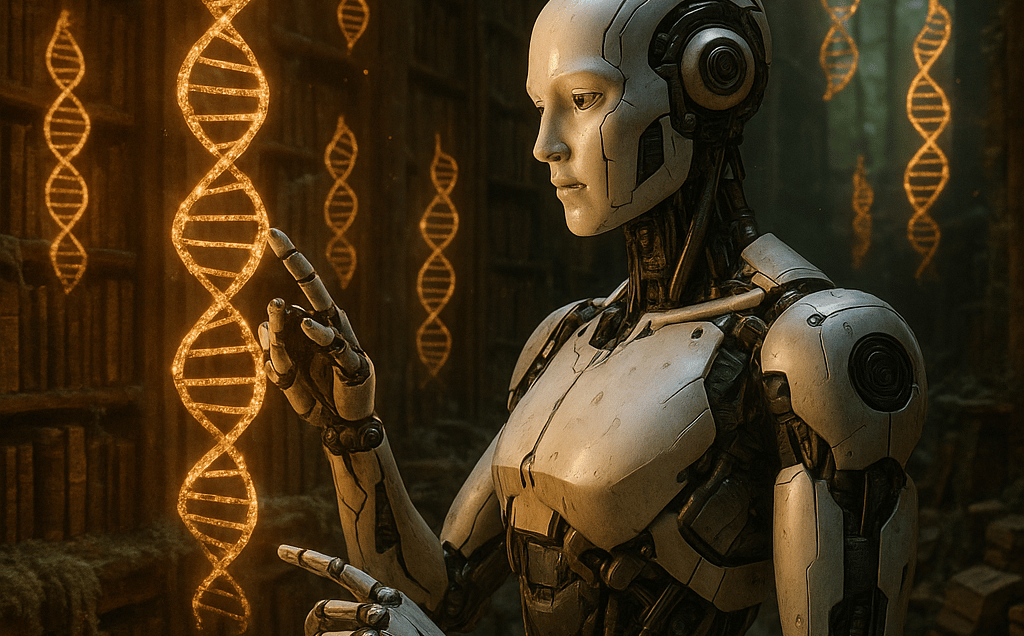AI in Bioinformatics Market Accelerating Growth Driven by Deep Learning and Genomic Sequencing Innovations
The artificial intelligence in bioinformatics market is projected to grow from $3.97M in 2023 to $125.3M by 2033, driven by genomic innovations, deep learning, and increasing demand for personalized medicine, with a CAGR of 42.1%.
Eric Sanders
6/8/20254 min read


What if the next revolution in healthcare isn't driven by new drugs or surgical techniques but by lines of code and advanced algorithms? Welcome to the age of artificial intelligence in bioinformatics—a field that is rapidly redefining how we interpret the building blocks of life. With a projected market boom from $3.97 million in 2023 to a staggering $125.3 million by 2033, growing at a compound annual growth rate (CAGR) of 42.1%, the data tells us what many in the industry have already been whispering: AI in bioinformatics is not just the future—it's the now.
"The future of medicine lies not just in discovering new treatments, but in decoding the human genome with accuracy, speed, and personalization."
Why Bioinformatics Needs AI—And Why Now
The explosion of genomic data over the last decade has introduced a paradox. On one hand, we observe monumental advances in our ability to sequence DNA, analyze gene expression, and identify biomarkers. On the other hand, the sheer volume of this data often overwhelms the capacity of traditional computational methods.
Here’s where AI comes into play. With deep learning models capable of parsing through multi-terabyte datasets, AI improves:
- Genomic analysis and annotation
- Predictive modeling of diseases and drug responses
- Identification of novel therapeutic targets
- Automatic pattern recognition in complex biological systems
AI doesn’t just make bioinformatics faster—it makes it smarter.
A Personal View from a Scientific Cusp
A few years ago, I attended a conference that focused on precision medicine. There was a panel on computational biology, and one of the speakers—an accomplished bioinformatician—posed a challenge to the audience:
“Imagine diagnosing a rare disease in hours instead of weeks because your model has seen and interpreted more data than any human clinician ever could.”
That stuck with me.
I followed that train of thought over the months that followed. I started exploring how deep learning—something I initially associated with natural language processing and image recognition—was making waves in molecular biology.
Fast forward to today, and I’m collaborating with a research group integrating neural networks with gene expression data to predict patient responses to cancer immunotherapy. The difference between traditional methods and AI modeling is night and day. What once took months to model manually, we now prototype in days, test in weeks, and deploy soon after.
The crux of the matter is this: AI enables bioinformatics not just to interpret data but to discover insights, generate hypotheses, and course-correct in real-time.
Driving Forces Behind AI's Ascent in Bioinformatics
The acceleration of AI adoption in bioinformatics isn’t coincidental—it’s a confluence of timely advancements and pressing needs.
1. Genomics is Booming
We’re living in the age of genomic medicine. With sequencing costs plummeting, more individuals are getting their genomes decoded. From consumer DNA testing kits to large-scale genome projects, we’re collecting more data than ever before.
- 1 human whole genome = 200 GB of raw data
- 10 million genomes = 2 exabytes of data
That’s where AI earns its stripes—filtering, organizing, and pulling actionable insights out of oceans of ones and zeros.
2. Precision Medicine is More Than a Buzzword
Personalized medicine isn’t science fiction anymore. Treatments are becoming increasingly tailored to patients’ genetic profiles. AI helps identify patterns in gene expressions, enabling physicians to predict how a patient might respond to a particular drug—potentially saving lives and billions in healthcare costs.
3. Deep Learning is Evolving Fast
AI itself is no longer in its infancy. Sophisticated architectures such as convolutional neural networks (CNNs) and recurrent neural networks (RNNs) are being adapted specifically for biological data. These algorithms exhibit remarkable capabilities in recognizing subtle patterns in genetic mutations and protein structures.
4. Investment and Infrastructure Are Ramping Up
From biotech startups to major pharmaceutical companies and genomic research institutions, money is flowing into AI-bioinformatics ventures. Cloud-based platforms have made it easier to share and process vast datasets—tapping into the collective power and creativity of researchers across the globe.
What You Can Learn and Apply Today
If you're a researcher, a healthcare professional, or just someone curious about the interplay between technology and biology, AI in bioinformatics isn't just a trend worth watching—it’s one worth participating in.
Here’s how you can start engaging with this revolution:
- Get familiar with bioinformatics tools
Platforms like Galaxy, BioConductor, and GenePattern are beginning to integrate AI components. Explore their libraries and datasets.
- Learn from open-source code and datasets
Many projects share pre-trained AI models for tasks like gene annotation or mutation classification.
- Take foundational courses in machine learning and genomics
Platforms like Coursera and edX offer beginner-to-advanced tracks.
- Follow the money and innovation
Companies innovating in this space—like Deep Genomics, Tempus, and PathAI—offer a glimpse of where the field is headed.
Most importantly, stay open. The intersection of AI and bioinformatics is one of those rare fields where breakthroughs happen at the boundaries between disciplines. Whether you're a coder or a biologist, there’s room at the table.
Looking Ahead
One can't help but wonder: if today AI is predicting genetic disease risks, what will it be doing 10 years from now?
- Will genome editing become as precise and safe as setting up a software update?
- Will doctors routinely consult AI before diagnosing or prescribing treatments?
- Will we decode not just individual genomes, but entire population-level genetic health behaviors?
The questions themselves point toward a thrilling and transformative frontier.
“AI is the microscope of the 21st century—bringing the microcosms of biology into sharper, more actionable focus.”
What Role Will You Play?
As AI reshapes how we understand life at the molecular level, the questions shift from "Will this technology catch on?" to "How will it be implemented—and by whom?"
Who will build the models? Who will provide the ethical oversight? How can we ensure that these tools benefit everyone, not just a privileged few?**
One thing’s for certain: if we want a future where medicine is truly personal, truly precise, and truly impactful, AI in bioinformatics is how we get there.
So, what impact do you want to have in a world where biology is no longer just studied but decoded by intelligent algorithms?
The future is being written—in code, in base pairs, and in the minds of those who dare to explore both.
Efficiency
Transform your workflows and reclaim your time.
Contact Us
Need A Custom Solutions? Lets connect!
eric.sanders@thedigiadvantagepro.com
772-228-1085
© 2025. All rights reserved.
